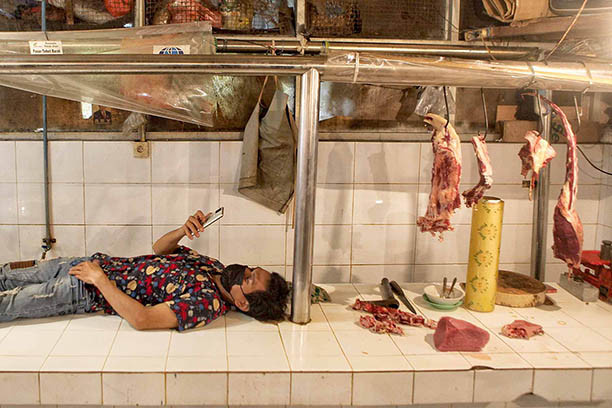Popular Reads
Top Results
Can't find what you're looking for?
View all search resultsPopular Reads
Top Results
Can't find what you're looking for?
View all search resultsInflation remains low despite Ramadan, Idul Fitri driving demand for food, transportation
Inflation in Indonesia remained benign in May, with consumer prices up just 1.68 percent on the year and 0.32 percent on the month, driven by higher demand for food and transportation in the Ramadan holiday season.
Change text size
Gift Premium Articles
to Anyone
I
ndonesia’s inflation rate picked up in May both on an annual and monthly basis as prices of food commodities and transportation services rose during the country’s peak spending period of Ramadan and Idul Fitri.
Consumer prices rose 0.32 percent in the month of May, lifting annual inflation to 1.68 percent, Statistics Indonesia (BPS) reported on Wednesday. While the monthly increase was higher than in May 2020, headline inflation remained unusually low, when compared for instance with the 2.19 percent seen a year earlier.
“Ramadan and Idul Fitri gave May a seasonally dominant [effect on inflation this year],” Setianto, BPS undersecretary for services and distribution statistics, said at an online briefing on Wednesday.
“If we look at the main commodities contributing to inflation, food items were [prominent] among them, which people needed to meet their daily needs related to fasting and Idul Fitri, and fares for passenger transportation increased.”
With people receiving religious holiday bonuses and spending more than usual because of Ramadan and Idul Fitri, May marked the highest level for both monthly and annual inflation so far this year. Nevertheless, the figures remain lower than pre-pandemic levels.
The food, beverages and tobacco expenditure group contributed 0.10 percentage points to monthly inflation, driven by higher prices of chicken, fresh fish, oranges, cooking oil and beef. Some food items saw price decreases, such as red chili and bird’s eye chili.
Read also: Indonesia halts beef imports amid India’s ‘second coronavirus wave’
The transportation expenditure group, the second-largest contributor to monthly inflation, showed the highest increase at 0.71 percent month-to-month (mtm) in May, driven largely by a surge in airfares, followed by intercity transportation fares, parking fees and train fares.
Core inflation in May stood at 1.37 percent on an annual basis, while goods and services with government-administered prices rose 0.93 percent and those with volatile prices rose 3.66 percent. While some types of fish belong to the volatile prices category, skipjack and yellowtail fish contributed to core inflation.
Read also: Food prices drive inflation as Indonesia heads into Idul Fitri
Faisal Rachman, an economist at publicly listed state-owned Bank Mandiri, said the monthly inflation figure matched the bank’s forecast and was higher than the market consensus of 0.29 percent. Core inflation had picked up on the back of not only seasonally high demand but also better consumption patterns and increased gold prices.
The bank maintains its full-year inflation forecast of 2.92 percent, which would fall squarely into Bank Indonesia’s (BI) target range of between 2 and 4 percent.
“We see Indonesia’s economic recovery tending to accelerate going forward as the velocity of money has started to pick up, along with improving consumption patterns,” Faisal said in an analysis published on Wednesday, pointing out that the consumer confidence level had moved back into optimistic territory in April.
“This in consequence will strengthen demand and spur money velocity, suggesting a demand-pull inflation potential.”
BI reported a consumer confidence index reading of 101.48 last month, marking a return to a level above the 100-point threshold separating the optimistic territory from the pessimistic. However, the confidence level among consumers with an income between Rp 3.1 million (US$217) and Rp 4 million remained below the threshold.










